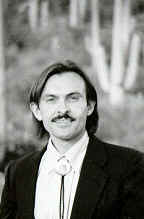Today, our delegation from North America (representing Coyote Institute, Union Institute & University, Concordia University, and the University of Arizona) continued our inter-faith meetings in Warburton, Victoria, today, in association with Sancta Sophia Meditation Center. Auntie Jenny Thompson began our meeting with a "welcome to country", which is the local custom. She told the stories of her ancestors, including her grandfather who was taken out of his home at age 14 and put on a reserve, at least partially to keep the non-aboriginal Australians from killing him. She had been forbidden from speaking her language at home or singing any of the songs. She told a marvelous story about the spirits of her ancestors coming to her and telling her to start walking and to stand up and to take on her lineage as a healer, which came from both her mother's and her father's sides. She told about how she was now being a healer in the ways of her people even though she hadn't ever intended to do so and had been reluctant to take on this task.
I began my presentation with epigenetics -- the idea that experience modifies our genetic code through changing the shape (through methylation of DNA or acetylation of the histones that support the DNA in its spiral configuration, which follows the Fibonacci sequence, also known as the Golden Ratio). The aboriginal people who experienced trauma in the residential schools or abuse at the hands of white Australians passed the effects of that abuse to their children through their DNA. These effects have been shown to last at least 4 generations unless modified through corrective emotional experience. The great grandchildren of residential school survivors will be genetically primed to behave as if they suffered through residential school as well.
How do we change this? First, the stories need to be told. These stories have not yet made mainstream, high school history texts, in Australia, or in the United States and Canada. In the United States, aboriginal people are treated in texts as annoying enemies who had to be subdued. In Canada, the nice Indians happily gave the Europeans their land in exchange for a few trinkets and the privilege of being part of Her Majesty's Commonwealth. The minority stories are typically quashed. The conquerors write the history books. That needs to be changed. People need to tell their stories and the stories of their ancestors. They need to know that these stories have been heard and will continue to be honored. Once this has happened, we can begin to heal. We do this by telling stories of heroic triumph and transformation. We do this by connecting with our ancestors and finding out what they need to feel vindicated. We do this through cross-cultural dialogue in which the children of the oppressors honor the stories and customs of the oppressed. We do this through sharing in genuine dialogue.
As part of the sharing process, we demonstrated our approach to "doctoring" or "indigenous energy medicine". A woman with severe digestive problems volunteered. Three of us worked on her. One of us talked with her and elicited her story, while another did hands-on work on her abdomen, and a third one drummed and sang and provided anchoring for us. Afterwards, Auntie Jenny told our group that what we had done was very similar to what was done in her community. They, too, practiced a kind of bodywork or osteopathy or hands-on healing while singing and dancing and praying and smoking, just as we had done. This led to a "spirited" discussion of the similarities among North American and Australian aboriginal healing practices.
We learned, of course, that Lakota guys were scattered about Australia, doing traditional ceremonies. My friend, Howard Bad Hand, from Taos Pueblo, had visited three times to do teachings.
We finished with the Australians doctoring a man with Parkinson's disease, while we sang in support. It was a rich day of cross-cultural support with some of the non-aboriginal Australians being surprised at the richness and presence of indigenous healing right in their own backyard. New opportunities were created for dialogue among them and Auntie Jenny.
As I write this, we are driving from Warburton to Canterbury in a driving rain. We'll eat our favorite fish tonight, barramundi, from the North of Australia, and tomorrow, drive to Gippsland, where we'll load onto a boat to go to Boole Pool for Culture Camp 2011, taking place on an island housing an ancient burial ground and owned by the Gippsland Cooperation.




